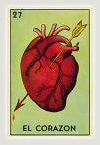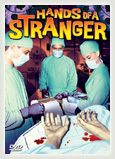Cold Hands, Warm Heart
 View book trailer here.
View book trailer here.
Click here to read an excerpt.
Q: Was Cold Hands, Warm Heart difficult to write because of the subject matter?
Difficult and challenging, yes, but also a joy and thrill to create characters who grapple head-on with the deepest questions we human beings face.
For as long as I can remember, I’ve had an obsession with death. I mean, how can anyone not think about death all the time? As a kid, I would lay in bed, imagining my parents in their coffins, my sister wasting away with some exotic disease, my friends burned in fiery crashes. I would really get into planning my own funeral. All the juicy details. What songs would be played? What would people be wearing? Who would break down and beg my forgiveness for not being a good enough friend? And in my bed, I would inevitably wind up sobbing—about the death of everyone I loved and cared about, including me. Especially me.
How can you possibly go on with living when you know you are going to die one day? How do you laugh and fall in love and bother doing homework? I feel that my whole life has been a process of coming to terms with that. And so I created the most dramatic situation I could imagine and populated the landscape with characters who can’t look away from the pressing reality of death.
Q: How did you research things like transplant procedure, medical terminology, and donor family/recipient relationships?
At the start, I knew almost nothing about organ transplantation, other than the fact that I proudly displayed a donor sticker on my driver’s license.
The research was quite a journey that started with a wonderful, dedicated social worker. Mary has worked for decades in the pediatric heart transplant unit of a large children’s hospital and told me so many emotionally dramatic stories about her caseload of kids and families.
I wound up interviewing hospitalized children waiting for organs and their nervous, hopeful parents. I hung out at the hospital school and talked to families and kids about life after transplant. One evening, I attended a “reunion” of pediatric heart transplant patients. What a sight—all these kids with their puffy faces from steroids running around in one big room, their parents celebrating this second chance at life.
I also spent many hours crying and laughing with donor families as they showed me photographs and described their decision to donate the organs of their loved ones.
I was very lucky to have several doctors and nurses step up and help me navigate through the medical lingo and technicalities. I also did a lot of reading about the transplant process and watched an awesome video that walked me through an operation. It was like being in the OR.
 My most memorable moment was going to the pathology lab with one 11-year-old boy where we both got to hold his old, damaged heart in our hands. I kept the photo we snapped—him, heart, me—on my desk for writing inspiration. Click here to see larger images.
My most memorable moment was going to the pathology lab with one 11-year-old boy where we both got to hold his old, damaged heart in our hands. I kept the photo we snapped—him, heart, me—on my desk for writing inspiration. Click here to see larger images.
Click here to watch a transplant operation on YouTube.
Q: Is there one character from the story with whom you identify the most?
Is there anyone I don’t identify with in some way?
Claire, the gym mom, definitely. My daughter Gwen competed in gymnastics for a good chunk of her childhood. At each meet, I sat in the bleachers cringing as she stepped up for her turn on the uneven bars or the torture log (my personal name for the balance beam). I had seen young gymnasts, my daughter included, dislocate shoulders, break arms and legs, rip tendons. The opening chapter of this book is my sick, sick mind carrying out my worst fantasy to its conclusion. (Click here to see YouTube video of 2008 Olympics Gold Medal winner He Kexin on the Uneven Bars.)
I also identify with Amanda’s perfectionism and hidden life, with Dani’s social awkwardness and wicked sense of humor. And Milo, of course. He’s definitely a kid who would fall asleep to fantasies of his own perfectly scripted funeral.
Q: What are the most profound differences, in your mind, between your last books (What I Call Life and Home, and Other Big, Fat Lies) and this one?
There are some obvious differences. This new book doesn’t have a foster kid in sight and the characters are slightly older and … but I’d rather answer a different question: How are the books similar? I didn’t set out with any intention, but when I finished I realized that I’ve written books about kids who find themselves in what most people would consider to be very unfair circumstances. They didn’t do anything wrong, but here they are. Their parents abandoned them to a broken foster care system. One girl comes out of the womb with her heart on the wrong side of her body. Life sucks big time.
But still. They go on to discover their uniqueness, their reason for being and living, right in the midst of these totally unfair and unacceptable circumstances. My characters definitely do their share of whining, but they are also very funny and resilient as they learn to embrace their sucky but rich lives.
For more about organ donation, click here.
Are you an organ recipient or a donor family? I would love to hear from you and maybe even publish your transplant tale on my blog. Get in touch.
Excerpt from Cold Hands, Warm Heart
 Let’s start with the quick version of my life. When I was born, I almost died and then I didn’t and then I got into collecting Beanie Babies and then I gave away all my Beanie Babies and then I had surgery and then I got a whole lot better. That meant I could play some sports. I think of this time as “The False Sense of Security” years. But I got sick again. I was probably over sports anyway. So when I was too sick to do much of anything, I watched lots of TV shows and movies. And I thought about my past. That’s what you do when you have too much time on your hands. Think, think, think. I was a regular “dwell on the past” machine. But then I decided—enough of that!—and turned my brain 180-degrees in the other direction.
Let’s start with the quick version of my life. When I was born, I almost died and then I didn’t and then I got into collecting Beanie Babies and then I gave away all my Beanie Babies and then I had surgery and then I got a whole lot better. That meant I could play some sports. I think of this time as “The False Sense of Security” years. But I got sick again. I was probably over sports anyway. So when I was too sick to do much of anything, I watched lots of TV shows and movies. And I thought about my past. That’s what you do when you have too much time on your hands. Think, think, think. I was a regular “dwell on the past” machine. But then I decided—enough of that!—and turned my brain 180-degrees in the other direction.
That’s where I am now, contemplating my future.
What about it? What’s out there waiting for me?
What if my future’s like… well, what if it’s like that old movie I saw?
 Music please. Opening credits of Hands of a Stranger. 1960s haircuts and cars. Enter a young gifted pianist named Vernon who is smack in the middle of musical stardom. He’s riding high on life, until he’s involved in a car accident in which his hands get mangled like dog meat. Next, enter the well-meaning but ethically-challenged surgeon who removes Vernon’s hands and replaces them with a brand new pair, courtesy of a fresh corpse.
Music please. Opening credits of Hands of a Stranger. 1960s haircuts and cars. Enter a young gifted pianist named Vernon who is smack in the middle of musical stardom. He’s riding high on life, until he’s involved in a car accident in which his hands get mangled like dog meat. Next, enter the well-meaning but ethically-challenged surgeon who removes Vernon’s hands and replaces them with a brand new pair, courtesy of a fresh corpse.
Since the surgery is bizarrely experimental and has never been performed before anywhere on earth, you can bet that Vernon’s insurance company didn’t cover the costs.
So anyway…
After the surgery, reality sets in quicker than a staph infection, which is something that I hope to never, ever have again in my life. It turns out that Vernon’s replacement hands came off the body of a murderer. You know this because the hands were filmed in the kind of creepy black and white lighting that was popular in 1960s low-budget horror films.
It turns out that you can take the hands off a murderer, but you can’t take the murderer off the hands.
If I were writing an essay about this movie in standard MLA format, this would be my second paragraph thesis point: Body parts have a mind of their own. The new appendages take Vernon down a very dark path indeed. He starts his murderous rampage with an ex-girlfriend who didn’t bother to visit him in the hospital; the hands knock her backwards over a table, sending romantic candles onto the curtains and her whole apartment up in flames.
This last scene isn’t as scary as it sounds, despite the spine-chilling musical accompaniment. As Beth—aka mom—reminds me, moviegoers back in the 60s had a lot less tolerance for serious blood letting and decapitations than we do today. The murder scene is actually kind of funny, except if you’re about eight. My cousin Cara came completely and totally unglued and had to sleep with her mother for the rest of the week. Baby! Guess who got blamed for letting Miss Delicate Nerve-Endings watch the Sci Fi Horror channel?
Me. Moi. Danielle, Dani. That’s who.
I won’t spoil the ending of the movie because you might be home sick from school one day and wind up watching this horror classic. I thoroughly recommend it. Some people might consider it lame, but where they see cheesy acting and disappointingly tame love scenes, I see a thinking-person’s medical thriller that turns your brain inside out with questions. Such as,
Question: Is a piano player’s life worthwhile if he can’t play the piano? In other words, why bother living if you can’t follow your passions?
Question: Just how much should medical personnel be mixing and matching body parts?
Question: What makes you you and me me, besides the standard package of muscles, veins, hair and organs?
Want to read more? Of course you do! Click on the box to order the book.
